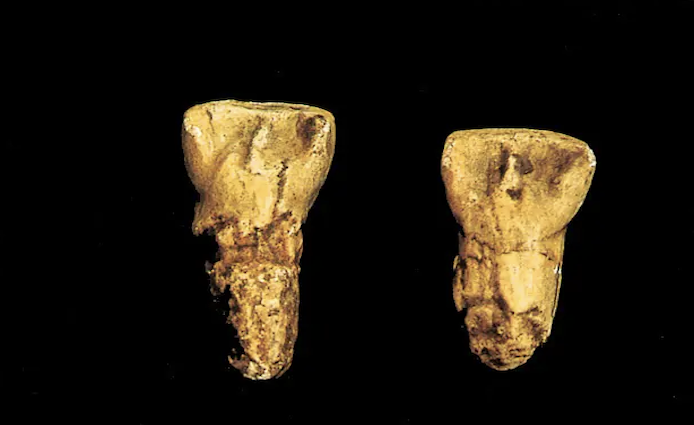
The Yuanmou Man 1

Yuanmou Man is a subspecies of H. erectus which inhabited the Yuanmou Basin in the Yunnan Province, southwestern China, roughly 1.7 million years ago. It is the first fossil evidence of humans in China, though they probably reached the region at least 2 million years ago. Yuanmou Man is known only from two upper first incisors presumed to have belonged to a male, and a partial tibia presumed to have belonged to a female. The female may have stood about 123.6–130.4 cm in life. These remains are anatomically quite similar to those of contemporary early Homo in Africa, namely H. habilis and H. ergaster.
Yuanmou Man inhabited a mixed environment featuring grassland, bushland, marshland, and forest dominated by pine and alder. They lived alongside chalicotheres, deer, the elephant Stegodon, rhinos, cattle, pigs, and the giant short-faced hyaena. The site currently sits at an elevation of 1,050–1,150m They manufactured simple cores, flakes, choppers, pointed tools, and scrapers which paralleled the technology of their African contemporaries.
On May 1, 1965, geologist Qian Fang recovered two archaic human upper first incisors (catalog number V1519) from fossiliferous deposits of the Yuanmou Basin near Shangnabang village, Yuanmou County, Yunnan Province, China. When they were formally described in 1973, they were determined to have belonged to a young male. Qian's field team was funded by the Chinese Academy of Geosciences. The Institute of Vertebrate Paleontology and Paleoanthropology funded further excavation of the site and reported 16 stone tools, of which six were found in situ and 10 nearby.
The Yuanmou Basin sits just to the southeast of the Tibetan Plateau and is the lowest basin on the central Yunnan–Guizhou Plateau at an elevation of 1,050–1,150 m (3,440–3,770 ft). The Yuanmou Formation is divided into four members and 28 layers. The human teeth were discovered in the silty clay and sandy conglomerates of Member 4 (the uppermost member) near the bottom of layer 25.
In December 1984, a field team dispatched by the Beijing Natural History Museum to survey the Guojiabao site, just 250 m (820 ft) away from the original Yuanmou Man teeth, unearthed a left human tibial shaft in a layer just overlying layer 25 in Member 4. The tibia was described in 1991 and was determined to belong to a young female H. e. yuanmouensis.
Reference: Wikipedia
Photo resource:Internet
If there's any copyright issue involved, please contact us to delete.



